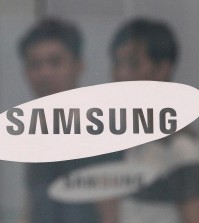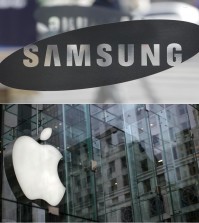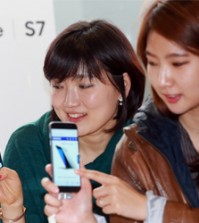- California Assembly OKs highest minimum wage in nation
- S. Korea unveils first graphic cigarette warnings
- US joins with South Korea, Japan in bid to deter North Korea
- LPGA golfer Chun In-gee finally back in action
- S. Korea won’t be top seed in final World Cup qualification round
- US men’s soccer misses 2nd straight Olympics
- US back on track in qualifying with 4-0 win over Guatemala
- High-intensity workout injuries spawn cottage industry
- CDC expands range of Zika mosquitoes into parts of Northeast
- Who knew? ‘The Walking Dead’ is helping families connect
Patriot Games
Leading trend expert picks 3 major keywords for 2014 - ”Sports, convergence, small luxuries”
By Kim Bo-eun
The year 2014, packed with major sports events such as the Winter Olympics, FIFA World Cup and Asian Games, is bound to set off surges of patriotism in Koreans.
Patriotism is a powerful marketing tool, and companies should utilize it to the fullest to boost sluggish domestic demand, analysts say. Thus, patriotic marketing is forecasted to be a dominant trend this year, along with the commercialization of products converging with IT and consumer spending on small luxuries.
Corporations have long incorporated love and pride for one’s country into their marketing of products and services, as these feelings appeal to the broadest segment of consumers and effectively influence their purchasing habits.
But with patriotic marketing being nothing new, simply conveying a sense of national pride will not automatically lead to increased sales. This is because the young generation does not share the same idea of patriotism as the older generation, who bought products of domestic companies simply because they were made in Korea, according to trend analyst Kim Yong-sub.
“The key is to convey patriotism in the most refined way,” Kim said.
For young people, the fact that a product was domestically produced has little meaning. They rather choose products based on brand image, product quality or performance. This is evident in the automobile market.
According to data from Kim’s latest book, “Life Trend 2014,” the domestic consumption rate of Hyundai Motor and Kia Motors is falling. The monthly rate fell below 70 percent for the first time last August and dropped further to 68.9 percent in September. However, the share of exported vehicles reached 12.1 percent last August, soon after it surpassed 10 percent, and is forecasted to exceed 20 percent by 2016.
Kim attributes these figures partly to people’s distrust of domestic automobile manufacturers, which produce different vehicles for domestic and foreign markets.
“Companies will have to demonstrate that they care for domestic consumers,” he said.
Hyundai Motor and Samsung become rivals
Among the hottest items at this year’s Consumer Electronics Show in Las Vegas was the connected car. Although it was presented at last year’s show as well, it garnered greater media attention this time due to its expected commercial availability this year.
“Commercial availability is the biggest difference between this year and the previous years. In the past years, all the hype was about what would become available in future years, but now, it is about selling the actual product,” Kim said.
A connected car refers to a vehicle equipped with Internet access — a product of the convergence between the automobile and IT industries. At the same time, however, these once-disparate industries have become rivals.
“It’s now about who has hegemony over the other. This is because each of the industries has developed to the extent that it can incorporate the other,” he said.
IT parts now take up an increasingly large portion in automobiles. So basically, all that IT firms need is driving gear and they could make their own vehicles. The same applies for automobile companies — they are becoming increasingly competitive through incorporating IT into cars. The interdependence between IT and automobile companies is disappearing, and they are becoming competitors.
But the automobile industry isn’t the only one converging with IT. Other industries are doing so as well, which is bringing sweeping changes to industry landscapes.
Wearable devices are another example of IT being incorporated into existing industries such as sports or fashion.
“The smartphone market has already reached saturation — everyone uses smartphones these days. The technology market continues to bring forth new technology, and wearable devices are the next big thing,” said Kim.
These devices include wristbands that check the pulse and body temperature of the wearer and glasses that can take pictures. But while these devices offer utility and convenience, companies also need to be aware of the grave social problems they could cause when abused, he added.
Consumers relish small luxuries during economic slump
Despite the prolonged economic recession, premium delicacies were in high demand at department stores last year. As such, Kim identifies expenditures on small but pricey items as one of the biggest consumer trends in a sluggish economy.
Small luxuries are different from traditional luxuries such as designer bags and imported cars, which are tremendously expensive and oftentimes purchased to impress others. Rather, according to Kim, they refer to goods that are still affordable but grant the buyer a sense of satisfaction.
“The desire for consumption does not go away, so consumers find relatively high-priced items to satisfy their needs,” he said. “Gourmet macaroons, for example, wouldn’t cost more than 10,000 won. It’s not so much about the physical price but how the consumer perceives it psychologically.”
In the past, companies focused on bringing down the price of goods when consumers were less willing to spend. They created “mastage” brands — a combination of the words mass and prestige — with lower-priced luxury goods to satisfy consumer needs. However, the trend has shifted so that they now raise the price of conventionally lower-priced goods such as desserts and snacks.
“Companies are starting to add a premium on existing products. This is because consumers are willing to pay 20,000 won for a product if an additional 10,000 won makes it premium when the regular one is 10,000 won.”
Such a spending pattern is also evident in the booming sales of Danish premium audio brand Bang & Olufsen, popular for its audio sets and headphones. The brand has six official stores in the country, and the flagship store in the upscale Apgujeong-dong area is consistently among the top five global stores in terms of sales — it ranked fifth in the world in 2012 and third in the first quarter of 2013. The brand’s main consumers here are those in their 20s and 30s.
Kim said corporations need to not only catch these preferences in consumer expenditures, but read the holistic consumer behavior. He added that big data can provide clues that can help companies analyze consumers.

















